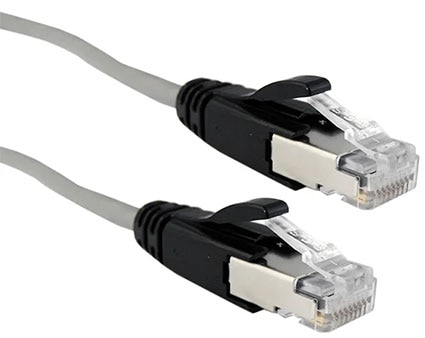Future-Proofing PoE Standards to Power Modern AI Cameras
Power over Ethernet (PoE) has modernized security installations by delivering both data connectivity and DC power through a single cable to AI-powered cameras and intelligent edge devices. However, a critical power gap is emerging that threatens system reliability and performance.
Legacy PoE standards, such as IEEE 802.3af and IEEE 802.3at, met the power requirements of early IP cameras that drew 8-30 W of power. However, advanced PTZ cameras with AI capabilities require significantly more power, which can be as high as 50 W or more.
This power deficit problem arises from the disparity between legacy PoE infrastructure and the growing demand for feature-rich security cameras. The power mismatch might be a minor inconvenience at first, but it can become a fundamental barrier to reliable operation and system functionality. The actual power draw of a device is never a static number but rather a function of its current activity.
The primary solution to this mismatch is a hardware upgrade, which involves moving the network infrastructure to a higher power standard that can meet the dynamic requirements of surveillance technology. To address the power deficit and build a resilient surveillance network, engineers have several hardware-based solutions, including upgrading the network chassis with targeted PoE++ injectors or cabling solutions.
Engineering solutions for older PoE infrastructure
1. Use of PoE++ injector (Figure 1)
For instance, if an AI camera that expects PoE++ is plugged into a PoE/PoE+ port, it may not power on at all, or it might boot in a reduced-functionality mode. Some smart cameras do perform power negotiation and enter a constrained mode if full power isn’t provided, for example, disabling the IR illuminator, heater, or edge processing to stay within a 30 W cap.
 Figure 1: Phihong USA’s POE60U-1BTE-R single port multi-gig Power-over-Ethernet IEEE802.3bt power injector capable of delivering 60 W (Image source: Phihong USA)
Figure 1: Phihong USA’s POE60U-1BTE-R single port multi-gig Power-over-Ethernet IEEE802.3bt power injector capable of delivering 60 W (Image source: Phihong USA)
In many upgrade scenarios, the simplest solution for an underpowered port is to add a PoE++ injector (midspan) that supplies the necessary 802.3bt power between the switch and the device. For small-scale deployments, this can be a straightforward solution, as an 802.3bt midspan can deliver up to 60 W or more per port, making it a viable option for retrofitting high-power cameras onto networks whose switches only support 802.3af/at.
2. Planning power budget
Integrators face total PoE budget constraints on switches. For instance, a legacy PoE switch with a 150 W power budget shared across all ports will provide sufficient power when each connected camera draws 5-10 W of power. But if a single AI camera consumes 25-50 W, only a few of those can easily max out a supply designed for older devices. Without planning, adding high-draw cameras can trip power limits, causing some ports to shut down.
Engineers managing these budgets require PoE-capable network management to prioritize critical ports, implement load shedding, and allocate budget headroom to prevent all ports from reaching maximum capacity simultaneously.
3. Upgrading cable setup
Using an existing cabling setup can also expose weaknesses. The standard Cat5e/Cat6 cables (Figure 2) in most CCTV installs can technically carry PoE++ power, but voltage drops, and heat dissipation becomes more pronounced at high loads. A long cable run delivering higher watts to a camera will lose a few watts as heat and can also be affected by resistance.
 Figure 2: Bel Incorporation’s BM-6ASG001F Ethernet Cat6A modular cable (Image source: Bel Incorporation)
Figure 2: Bel Incorporation’s BM-6ASG001F Ethernet Cat6A modular cable (Image source: Bel Incorporation)
Integrators must take into account the cable specifications of the existing infrastructure. In some cases, recabling or using heavier-gauge category cable, such as Cat6a or specialized PoE cable, may be advisable for high-power devices.
These challenges make it clear that simply buying cutting-edge cameras is not enough. The supporting network must evolve in tandem with it. Many security integrators must conduct site audits for PoE capability, which involves checking each link in the chain, including switches, midspans, cabling, and patch panels, to verify that it can handle the new devices’ PoE class and power draw.
Conclusion
By designing with generous power margins and adopting the latest PoE standards, integrators can future proof their intelligent surveillance systems and ensure that power is never the limiting factor in deploying new security solutions. Investing in high-power PoE infrastructure yields dividends beyond just AI cameras, as it helps in improving power management and reliability of IoT systems.

Have questions or comments? Continue the conversation on TechForum, DigiKey's online community and technical resource.
Visit TechForum








